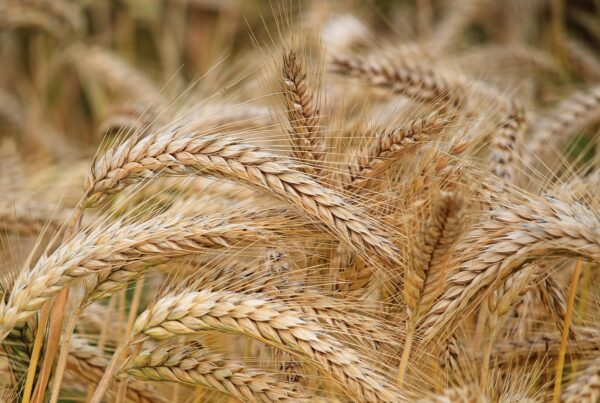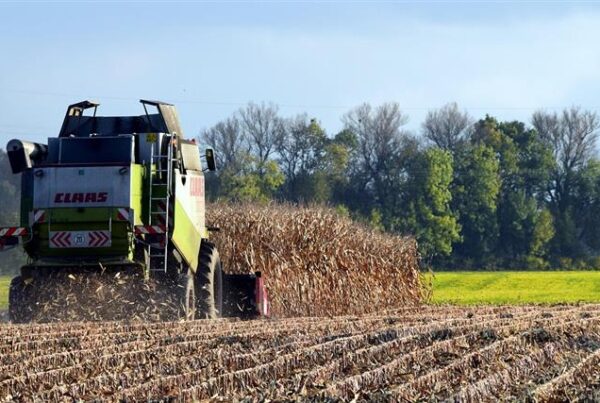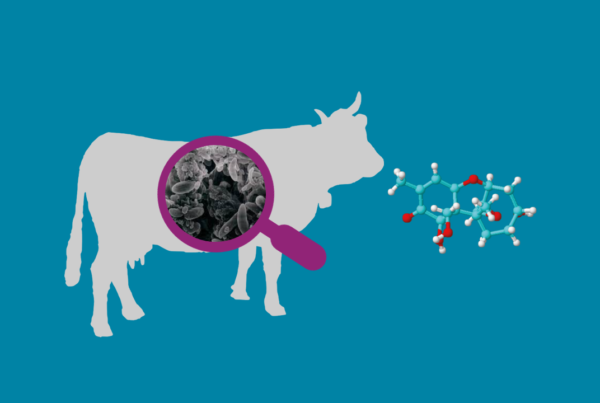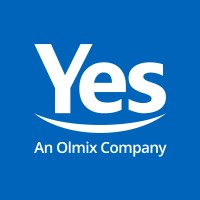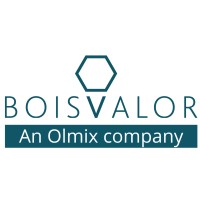Deoxynivalenol (DON) is one of the most prevalent mycotoxins in the world. It can harm intestinal morphology and cause liver oxidative stress to broiler chickens, finally impairing growth performance. These consequences can occur even at levels below the recommended threshold of 5 mg DON/kg of feed (European Commission). Several studies with broilers showed that DON triggers decreased villus heights and intestinal damage at level as low as 1.9 mg/kg. In collaboration with Ghent University (Belgium) and Schothorst Feed Research (The Netherlands), two trials were carried-out to assess the capacity of an algoclay-based decontaminant (MT.X+®, Olmix) to reduce exposure to several mycotoxins in broilers and to improve their intestinal and hepatic metabolism when naturally exposed to DON.
The first one was a toxicokinetic trial where DON, OTA and AFB1 were accurately administered in a single oral bolus to broiler chickens, to reach the equivalent of 5 mg/kg, 2.5 mg/kg and 20 mg/kg of feed, respectively. One group did not receive the decontaminant (Control group) and the other group received the algoclay-based decontaminant at 2.5 g/kg feed (MT.X+® group). Blood samples were serially collected to measure the plasma levels of DON-3S (DON-3-sulphate, DON main metabolite in poultry), OTA and AFB1. MT.X+® reduced DON exposure of broilers. Less quantity of plasma DON-3S (-40%) was found in the MT.X+® group (figure 1).
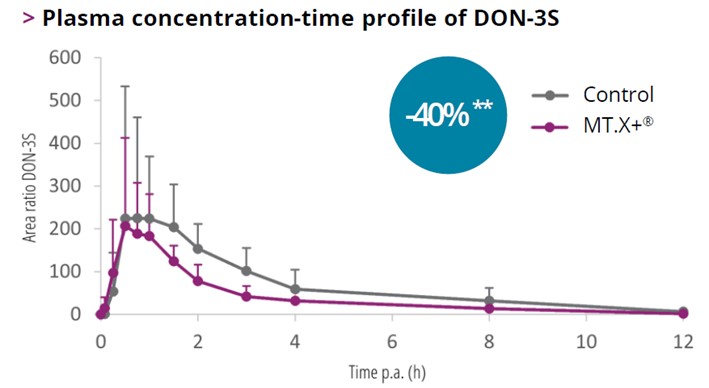
Figure 1. Mean plasma concentration-time curve of DON-3S, main DON metabolite, after oral bolus administration with DON (0.5 mg/kg BW). et al.
Results showed that MT.X+® significantly reduced the exposure of broilers to OTA, since 44% lower quantity of this mycotoxin was found in blood. Regarding AFB1, a bigger reduction was seen, birds supplemented with the product had 64% less AFB1 in the blood, compared with the control ones.
In the second trial two diets were used, the Control group received a diet marginally contaminated with DON (~0.2 mg DON/kg). The second diet was naturally contaminated with DON (~3.0 mg DON/kg) and was fed to two groups of birds. DON group received this diet with no binders, and the MT.X+® group received the same feed + 2.0 g of MT.X+®/kg feed. Dietary exposure to 3 mg/kg DON caused villus damage and shortening. Furthermore, oxidative stress took place in the liver. These effects were not observed when MT.X+® was added to the DON diet.
Table 1 Jejunum histomorphometry on day 37 et al.
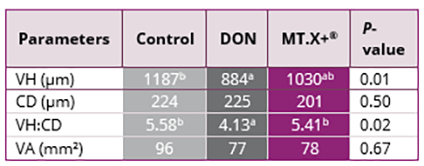
In summary, the study demonstrates that the algoclay technology tested can reduce systemic exposure to deoxynivalenol (40%), ochratoxin A (44%), and aflatoxin B1 (64%), based on a single oral bolus model for toxicokinetic evaluation. Furthermore, damage triggered by circa 3 mg/kg deoxynivalenol (DON) on the intestinal morphology and oxidative stress in the liver of broiler chickens was avoided via dietary supplementation with the algoclay-based decontaminant.
Reference: Gallissot, M.; Rodriguez, M.A.; Devreese, M.; Van herteryck, I.; Molist, F. and Santos, R. 2024. An Algoclay-Based Decontaminant Decreases Exposure to Aflatoxin B1, Ochratoxin A, and Deoxynivalenol in a Toxicokinetic Model, as well as Supports Intestinal Morphology, and Decreases Liver Oxidative Stress in Broiler Chickens Fed a Diet Naturally Contaminated with Deoxynivalenol. Toxins 16: 207.
